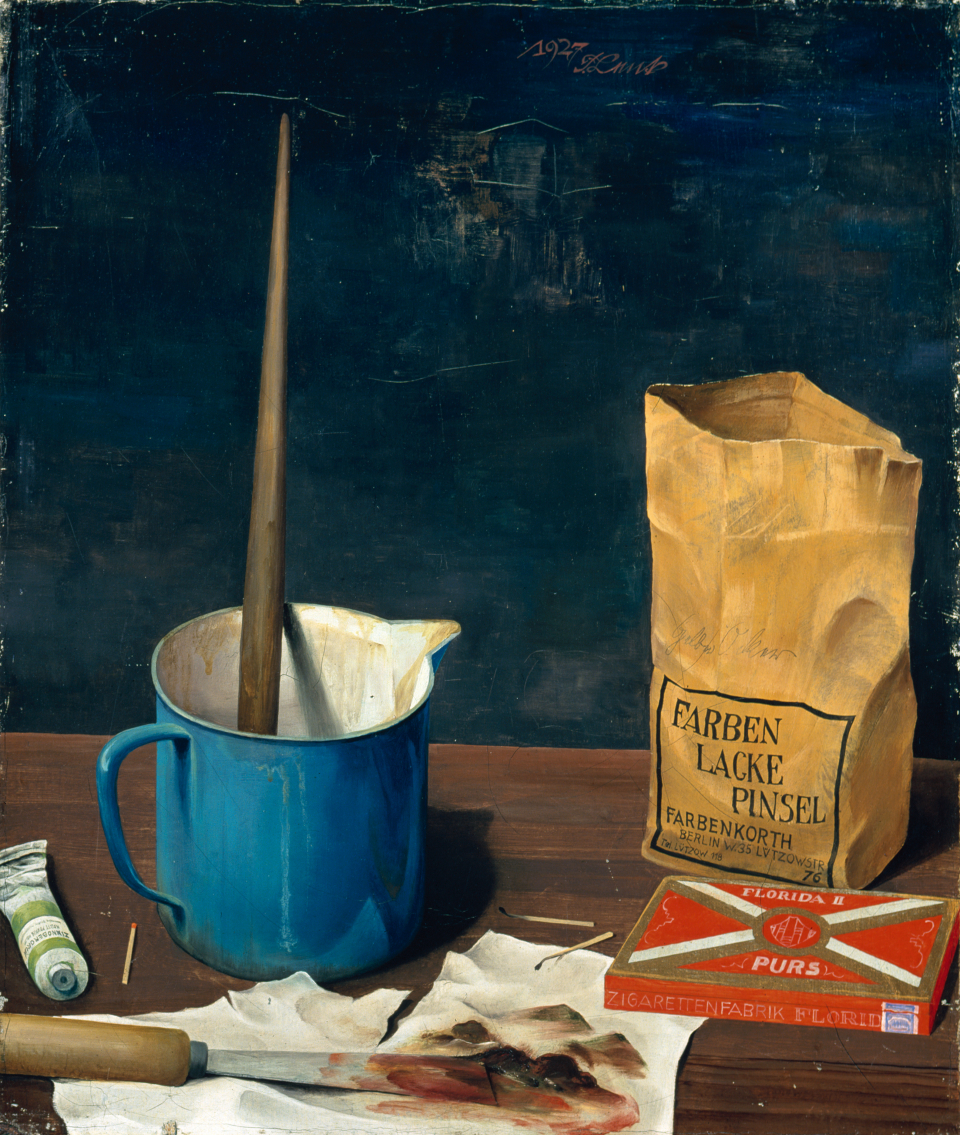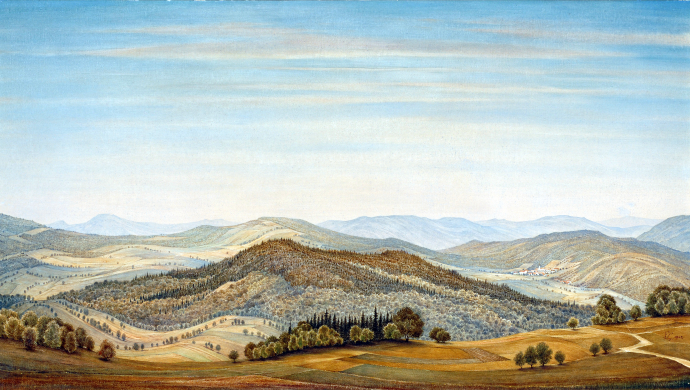Jugendstil-Bau > Ebene 1 > Galerie 10
Einstieg
Das »Stillleben mit gelber Tüte« wirkt in seiner Übersichtlichkeit nüchtern und lakonisch. Mit einem scheinbar »objektiven« Blick nimmt Franz Lenk seine Malutensilien in den Blick und schafft damit ein Gegenbild zu den opulenten Arrangements, wie man sie beispielsweise aus den Blumenstillleben der Impressionisten kennt. Stattdessen fängt er seine Gegenstände ohne jedes Pathos ein. Wie andere Künstler der Neuen Sachlichkeit versucht er sich über Alltägliches – die gewöhnlichen Gebrauchsgegenstände des Malers – der Wirklichkeit anzunähern. Dabei schildert seine Malweise akribisch jedes Detail. So gibt er etwa auch die Handschrift auf der gelben Tüte – »Gelbes Ocker« – minutiös wieder.
Lenks Stillleben setzt sich stilistisch deutlich von den Farb- und Formexperimenten des vorangegangenen Expressionismus ab. Die Rückkehr zur Gegenständlichkeit ist für ihn mit einer altmeisterlichen Maltechnik verbunden, in der ein dünnflüssiger Farbauftrag und Mehrschichtenmalerei von Bedeutung sind. Sein Stillleben ist aber auch eine Art Porträt in Abwesenheit. Alles deutet auf den Künstler hin – Farben, Spachtel und Zigaretten –, er selbst allerdings bleibt unsichtbar und ist durch seine Malerei dennoch implizit anwesend.
Einstieg
In its clarity »Still Life with Yellow Bag« appears sober and laconic. With an apparently “objective” gaze, Franz Lenk depicts his painting utensils, creating a counterimage to the opulent arrangements familiar, for example, from the flower still lifes of the Impressionists. Instead, he captures his objects in a manner devoid of all pathos. Like other New Objectivist artists, he attempts to approach reality through the everyday—in this case the artist’s commonplace objects of daily use. Employing a painting technique that captures every last detail, Lenk also succeeds in meticulously reproducing the handwriting on the yellow bag "Gelbes Ocker" (yellow ochre).
Lenk’s still life represents a clear stylistic break with the experiments in color and form of the preceding Expressionism. For Lenk, the return to representational painting is associated with an old master painting technique in which a thin application of paint and multiple layers are essential elements. However, his still life is also a type of self-portrait in absentia. Everything points to the artist—paint, palette knife, and cigarettes—and although he remains unseen, he is implicitly present through the act of painting.
Kunsthalle Mannheim

